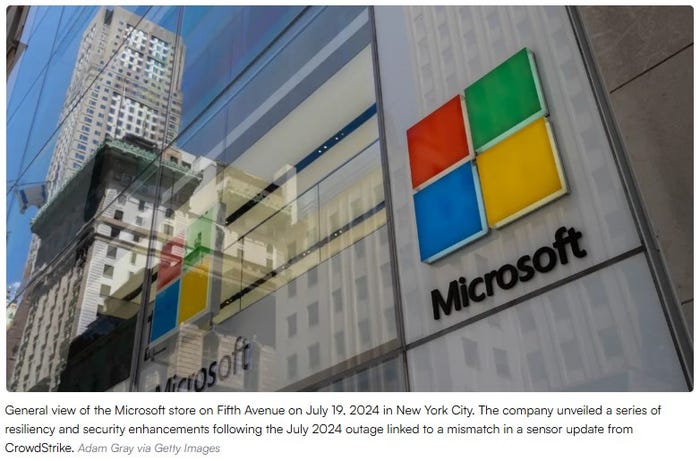Expanding the scope of LMR
Trunked systems deliver features that replicate advanced offering of commercial carriers
May 1, 2004
Land mobile radio system operators and end users frequently turn to commercial wireless carriers for advanced features — such as voice mail, caller ID, call forwarding and speed dialing — that typically aren’t available via traditional networks. However, a more cost-effective alternative is emerging through the development of trunked radio systems.
While trunked radio systems are not new, implementing these systems on smaller radio systems to take full advantage of such calling features is innovative and more cost-effective than ever before. For instance, small municipalities, as well as police and fire departments, are converting to trunked radio systems to offer their users more efficient usage of available channels, single or networked dispatch console(s) and caller ID, as well as emergency alert notification and voice-logging capabilities.
Moreover, large enterprises are converting their systems to trunked radio for use as a wireless private automatic branch exchange (PABX). By doing so, they are able to connect all employees through selective calling capabilities and offer pre-programmed, alpha-tagged speed dialing for groups, individual users or telephone numbers, rather than just by extension numbers. Many of these features are not yet available from wireless carriers.
Trunked systems also offer benefits to radio dealers, who can now offer a combination of telephone and radio dispatch services that in many cases rival the big networks. In addition, community repeater operators can trunk existing equipment and offer group dispatch and selective calling to current customers or expanding markets.
The SmarTrunk II trunking system protocol was developed to provide a more cost-effective means of integrating advanced services as described above with the capabilities traditionally offered by LMR radios, regardless of whether a single-repeater system is in use, or systems providing multisite, wide-area roaming capabilities are required.
The protocol can be used for both telephone interconnect and business dispatch applications at frequencies below 800 MHz. It combines a proprietary digital signaling format with existing two-way radio technology to create a communications system that provides features comparable to those provided by more expensive trunked radio systems.
Because the protocol technology is an overlay system, each mobile and portable radio on the subscriber’s network must have a customized logic board installed to control each radio’s operations. These plug-and-play logic boards control all signaling and trunking functions — including scanning, push-to-talk and monitoring — and include features such as trunked or conventional channel banks for multi-site applications, multiple talk and receive groups, two levels of remote radio kill, and enhanced use of the radio’s display, as well as voice inversion scrambling for secure transmissions.
The heart of the system is a trunking controller that is installed at the site and is compatible with most repeaters. The controller performs all signaling and trunking functions — including subscriber validation and call record accounting — and features a communications data bus that provides the memory needed to store subscriber and call accounting records.
A network switch enables system operators to link as many as 128 individual sites into a single, integrated communication network to offer subscribers wide area coverage when needed, plus a host of new advanced features such as voice mail, pre-recorded information messages, call forwarding, call transfer, usage and statistical reports, airtime billing system and radio-to-radio caller ID.
The network switch represents a cost-effective way to expand an existing system because it eliminates the need to add new controllers, repeaters or subscriber radios. Only the erasable programmable read-only memory (EPROM) contained in the existing controllers needs to be modified.
Consequently, small police and fire departments using this system are able to deploy a reasonably priced dispatch console that enables the operator to monitor traffic, execute dynamic regrouping of “on-the-fly” or pre-selected users, instantly call any specific user in the system, monitor emergency alert activations generated by a radio and monitor remote transmitter site parameters. The console option can be deployed as part of a computer network, making it even more cost-effective, which is an important consideration at a time when municipal budgets are being slashed.
System operators seeking to link remote controllers to the network switch can add a multiplexer — which converts digital and audio information going to and from a remote controller into a signal, which then can be carried by any two-wire, voice-grade or equivalent link — for each remote channel. Linking options include leased lines, spread spectrum, microwave, T1/E1 or RF phone line extenders. At the switch, multifunction interface cards provide the gateways to each link and — by extension — to the remote multiplexers. The multiplexer also has built-in remote site telemetry ports (four analog, two digital in, two digital out). The analog input range is between 0 and 12 VDC (adjustable).
The trunking technology is installed at both the base station and the subscriber radios. The base station equipment required for each channel consists of a trunking controller connected to a standard VHF or UHF radio repeater. For telephone interconnect applications, controllers can also be connected directly to standard telephone lines or to a PABX via an RJ-11 jack.
Because of the versatility and modularity of the network switch, each switch is individually configured with hardware and software components to meet specific system requirements. Note that in a multisite system, the system operator generally provides site-linking equipment, although recommendations can be made.
In summary, by adding a logic board to almost any brand radio, the trunking controller to almost any brand repeater, and the network switch, system operators and end users can now experience many of the advanced calling features once thought only available from commercial wireless services. All while controlling per user costs, as opposed to racking up uncontrollable wireless airtime minutes, roaming and long-distance charges, which — given the current economic environment — should appeal to municipalities, public-safety organizations and enterprises alike.
Tony Huber is an applications engineer for SmarTrunk Systems Inc. He is an industry veteran, having first worked at Wilson Electronics and then at Celltronics/RF Industries, Neutec Communications and Trilectric. After seven years with Qualcomm/Ericsson, Huber joined SmarTrunk. He has an associates degree in electronics technology from Bismarck State College, N.D.



